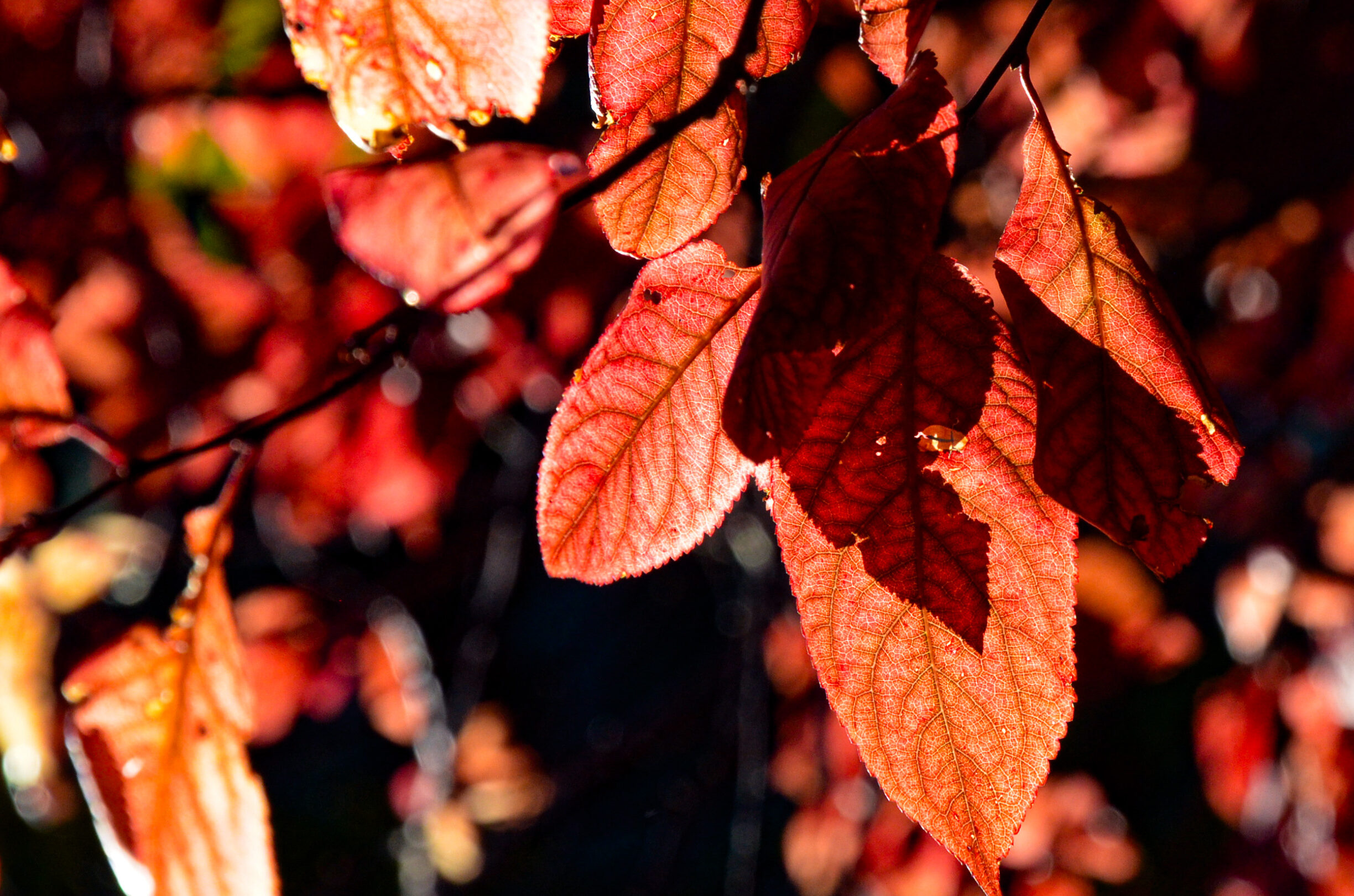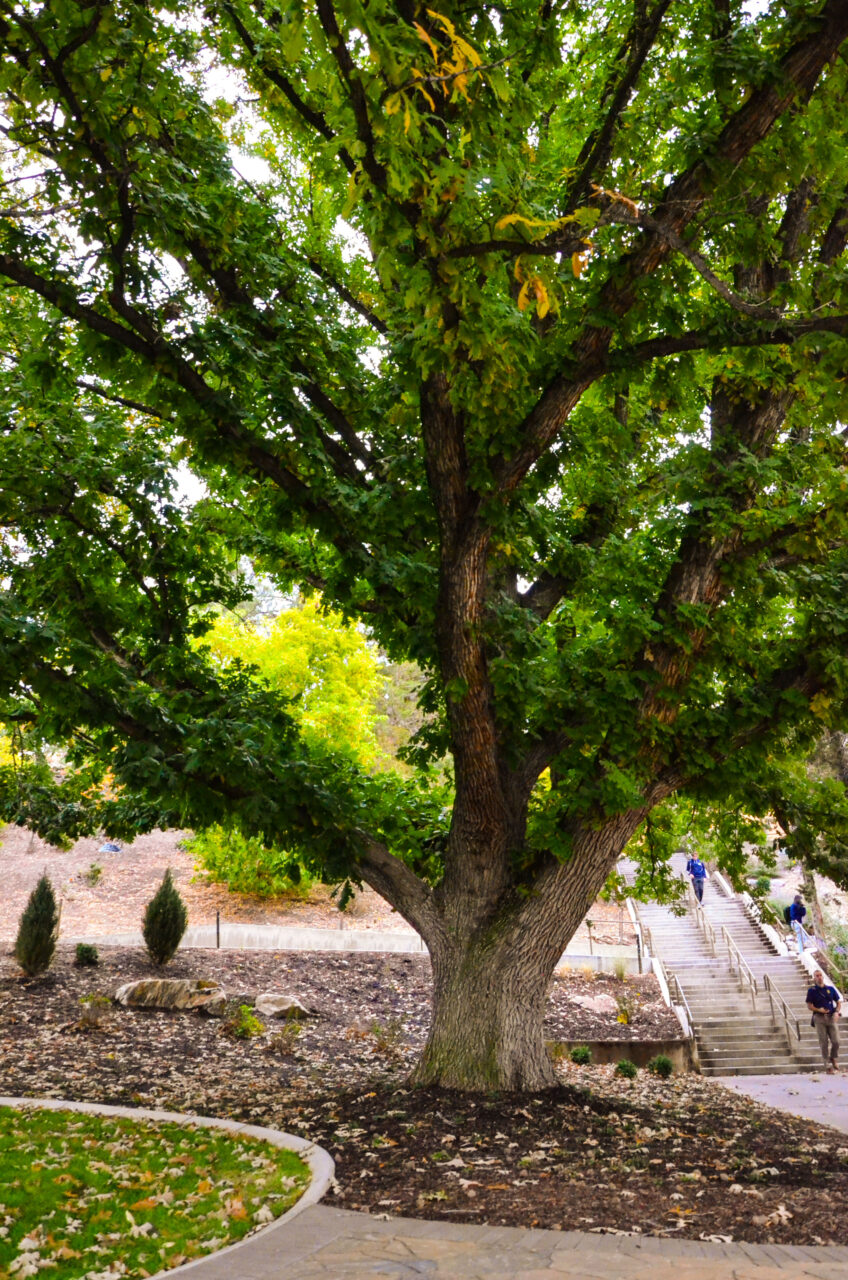

With varieties of maples, evergreens, columnar oaks and plum trees, BYU boasts more than 17,000 trees. However, BYU’s trees lead a more complicated life than is evident from simply walking around campus.
Trees are often used as symbols of time, with the rings indicating years a tree has stood immovable. What is not factored into this metaphor is the fragility of trees and the sometimes costly maintenance. Trees require using specific fertilizer, watering and specialized pruning.
BYU’s scientifically important Ginkgo tree, for example, changed from male to female when there were no longer any female Ginkgo trees left around it. This tree, unfortunately, was chopped down recently, BYU biology professor Clinton Whipple said.
This is just one example of the disconnect between faculty and grounds. Faculty were once responsible for a large part of grounds planning. One example is Bertrand F. Harrison, who taught botany for 43 years at BYU, most known by the section south of campus that bears his name: the Bertrand F. Harrison Arboretum.
Harrison’s vision for BYU grounds was to have plants from all over the world, especially representing areas of the West, as Harrison’s notes detail (available in the Harold B. Lee library for on site use). Where this vision collapsed is unclear, but the purpose of a college’s grounds have changed, Whipple went on.
Because faculty is less involved, grounds planners make the choices of which plants will be planted where, he explained. Planners often need to satisfy donors and administrators with their own vision of campus grounds.
Still, BYU’s grounds planner John Crespo tries to balance environmental factors in his designs.
“I try to identify areas that are extremely hard to maintain,” he said.
Identifying areas that require a lot of water, maintenance, pesticide and fertilizer has been Crespo’s approach to making the grounds more environmentally friendly. An added bonus is the reduction of costs.
“One of the things that has really impressed me is the understanding everyone has of the sacred nature of the funds we have,” Crespo said.
According to him, BYU receives tree fund donations. This is why cutting down a tree requires more approval than simply asking a grounds crew manager whether or not the tree can be cut down.
This system is not always the most efficient when it comes to individual trees. One example is the row of Norway Maples on the University Parkway traffic island between BYU’s baseball and football stadiums. These trees are infamous among BYU’s grounds crews for rarely taking to their scorching environment.
Karma Anderson, who manages BYU’s shrubs and trees, explained that BYU’s policy is to replace trees that die with the same variety of tree. This means even when a certain variety is not doing well in its environment, grounds crews are still expected to replace it with another of the same variety.
Anderson explained it is hard to get a request to the top to change this system, even for a single tree.
Some of this can be explained by the difficulty of designing within the constraints of what is already planted, Crespo said. Planting a more heat-tolerant variety of tree on University Parkway would mean either ripping out the healthy trees there to replace them all at once or replacing trees as they die. Neither option is ideal.
Removing healthy trees is expensive, and replacing one tree at a time means having a row of identical trees except for one or two. There is also no guarantee how long it would take to replace the whole line with the same variety of tree. It could be anywhere from a couple of years to 20 or 30 years.
As Crespo spots the most environmentally damaging and costly areas around campus, BYU slowly transitions to support a little more plant, insect and animal life.




